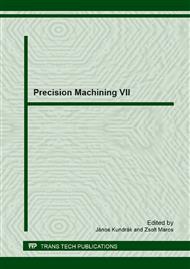p.261
p.266
p.272
p.281
p.287
p.292
p.298
p.304
p.310
Influence of Welding Parameters to Quality of Welds from Structural Steel
Abstract:
Welding is the most widely used technology of creating permanent joints in the engineering industry. Correct setting of welding parameters predisposes quality weld joint without unwanted defects. Article deals with the influence of fusion welding parameters on the final quality welds. Describes the thermal cycle of welding and its effects on the weld joint and theoretically describes used methods MIG / MAG. Core of the article is devoted to the description of the experiment and on the technological parameters of the welding process. Quality of weld is tested visually, metallographic and microhardness measurement of the weld joints.
Info:
Periodical:
Pages:
287-291
Citation:
Online since:
October 2013
Authors:
Keywords:
Price:
Сopyright:
© 2014 Trans Tech Publications Ltd. All Rights Reserved
Share:
Citation:


